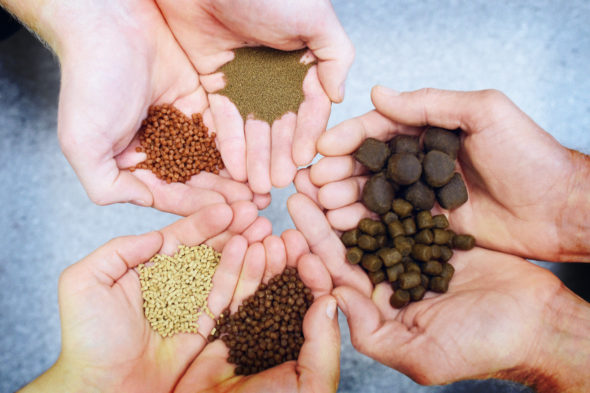Plant-based feed raw materials have been revolutionary in terms of reducing the pressure on harvesting wild fish for feed but simultaneously they have been criticized for increasing the competition for land use and environmental deterioration. They also contain certain amounts of anti-nutritional factors that in many cases limit their inclusion at high rates in aquafeeds.
New alternative raw materials have the potential to be part of aquafeed formulations without the restrictions of the plant protein raw materials.
Insect meals have similarities with fishmeal
Insect meals can be reared on side-streams from other bioindustries. Insect meals are also relatively concentrated raw materials (50 to 70% crude protein and 10 to 20% crude fat) and show a similar amino acid profile to fishmeal, although some can have relatively high amounts of chitin and indigestible proteins.

Single-cell proteins
Single-cell protein refers to microbial biomass or protein extracts coming from industrial fermentation processes. They are sources of almost all essential amino acids, which may not be available in plant alternatives. Amino acids represent 70-80 % of the total nitrogen of microbial cells and they also contain various vitamins such as A, B, C, D and E or vitamins. Similar to insects, side-streams from other bioindustries can be utilized for producing single-cell proteins.
Challenges and solutions
A major challenge has been to develop novel raw materials rich in useful long-chain polyunsaturated fatty acids (LC-PUFA). In recent years, commercial fermentation of micro-algae has provided commercial quantities of algae meals and oils rich in these indispensable fatty acids.
AquaIMPACT: Emerging raw materials for superior fish genotypes
AquaIMPACT objective for the utilization of emerging raw materials is to study the use of the novel raw material alternatives in diets with low fishmeal and fish oil inclusion. This will be done in comparison to more traditional diets with a high level of marine raw materials and validated in genetically selected and not selected fish.
Authors: Ramon Fontanillas, Grethe Rosenlund (Skretting Aquaculture Research Centre) & Daniel Montero, Silvia Torrecillas. (IU ECOAQUA – Universidad de Las Palmas de Gran Canaria, Spain).
